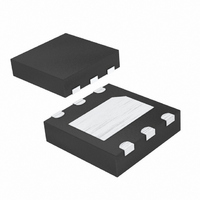MAX6642ATT90+T Maxim Integrated Products, MAX6642ATT90+T Datasheet - Page 11

MAX6642ATT90+T
Manufacturer Part Number
MAX6642ATT90+T
Description
IC TEMP SENSOR SMBUS 6-TDFN
Manufacturer
Maxim Integrated Products
Datasheet
1.MAX6642ATT90T.pdf
(14 pages)
Specifications of MAX6642ATT90+T
Function
Temp Monitoring System (Sensor)
Topology
ADC, Multiplexer, Register Bank
Sensor Type
External & Internal
Sensing Temperature
-40°C ~ 125°C, 0°C ~ 150°C
Output Type
I²C™/SMBus™
Output Alarm
Yes
Output Fan
No
Voltage - Supply
3 V ~ 5.5 V
Operating Temperature
-40°C ~ 125°C
Mounting Type
Surface Mount
Package / Case
6-TDFN Exposed Pad
Lead Free Status / RoHS Status
Lead free / RoHS Compliant
Other names
MAX6642ATT90+T
MAX6642ATT90+TTR
MAX6642ATT90+TTR
range. We have observed variations in remote tempera-
ture readings of less than ±2°C with a variety of dis-
crete transistors. Still, it is good design practice to
verify good consistency of temperature readings with
several discrete transistors from any manufacturer
under consideration.
The integrating ADC used has good noise rejection for
low-frequency signals such as 60Hz/120Hz power-sup-
ply hum. In noisy environments, high-frequency noise
reduction is needed for high-accuracy remote mea-
surements. The noise can be reduced with careful PCB
layout and proper external noise filtering.
High-frequency EMI is best filtered at DXP with an
external 2200pF capacitor. Larger capacitor values can
be used for added filtering, but do not exceed 3300pF
because excessive capacitance can introduce errors
due to the rise time of the switched current source.
Nearly all noise sources tested cause the temperature
conversion results to be higher than the actual temper-
ature, typically by +1°C to +10°C, depending on the
frequency and amplitude (see the Typical Operating
Characteristics ).
Follow these guidelines to reduce the measurement
error of the temperature sensors:
1) Connect the thermal-sense diode to the MAX6642
2) Place the MAX6642 as close as is practical to the
3) Do not route the thermal diode lines next to the
4) Route the thermal diode traces in parallel and in
Temperature Sensor with Overtemperature Alarm
using two traces—one between DXP and the
anode, the other between the MAX6642’s GND and
the cathode. Do not connect the cathode to GND at
the sense diode.
remote thermal diode. In noisy environments, such
as a computer motherboard, this distance can be
4in to 8in (typ). This length can be increased if the
worst noise sources are avoided. Noise sources
include CRTs, clock generators, memory buses,
and ISA/PCI buses.
deflection coils of a CRT. Also, do not route the
traces across fast digital signals, which can easily
introduce a 30°C error, even with good filtering.
close proximity to each other, away from any higher
voltage traces, such as +12VDC. Leakage currents
from PCB contamination must be dealt with careful-
ly since a 20MΩ leakage path from DXP to ground
causes about +1°C error. If high-voltage traces are
unavoidable, connect guard traces to GND on
either side of the DXP trace (Figure 4).
______________________________________________________________________________________
±1°C, SMBus-Compatible Remote/Local
ADC Noise Filtering
PCB Layout
5) Route through as few vias and crossunders as pos-
6) When introducing a thermocouple, make sure that
7) Use wide traces. Narrow traces are more inductive
8) Add a 47Ω resistor in series with V
9) Copper cannot be used as an EMI shield; only fer-
Use a twisted-pair cable to connect the remote sensor
for remote-sensor distances longer than 8in or in very
noisy environments. Twisted-pair cable lengths can be
between 6ft and 12ft before noise introduces excessive
errors. For longer distances, the best solution is a
shielded twisted pair like that used for audio micro-
phones. For example, Belden #8451 works well for dis-
tances up to 100ft in a noisy environment. At the
device, connect the twisted pair to DXP and GND and
the shield to GND. Leave the shield unconnected at the
remote diode.
For very long cable runs, the cable’s parasitic capaci-
tance often provides noise filtering, so the 2200pF
capacitor can often be removed or reduced in value.
Figure 4. Recommended DXP PC Traces
10 mils
10 mils
sible to minimize copper/solder thermocouple
effects.
both the thermal diode paths have matching ther-
mocouples. A copper-solder thermocouple exhibits
3µV/°C, and it takes about 200µV of voltage error at
DXP to cause a +1°C measurement error. Adding a
few thermocouples causes a negligible error.
and tend to pick up radiated noise. The 10-mil
widths and spacing recommended in Figure 4 are
not absolutely necessary, as they offer only a minor
improvement in leakage and noise over narrow
traces. Use wider traces when practical.
filtering (see the Typical Operating Circuit ).
rous materials such as steel work well. Placing a
copper ground plane between the DXP-DXN traces
and traces carrying high-frequency noise signals
does not help reduce EMI.
Twisted-Pair and Shielded Cables
THERMAL DIODE CATHODE/GND
THERMAL DIODE ANODE/DXP
GND
GND
CC
for best noise
10 mils
MINIMUM
10 mils
11






